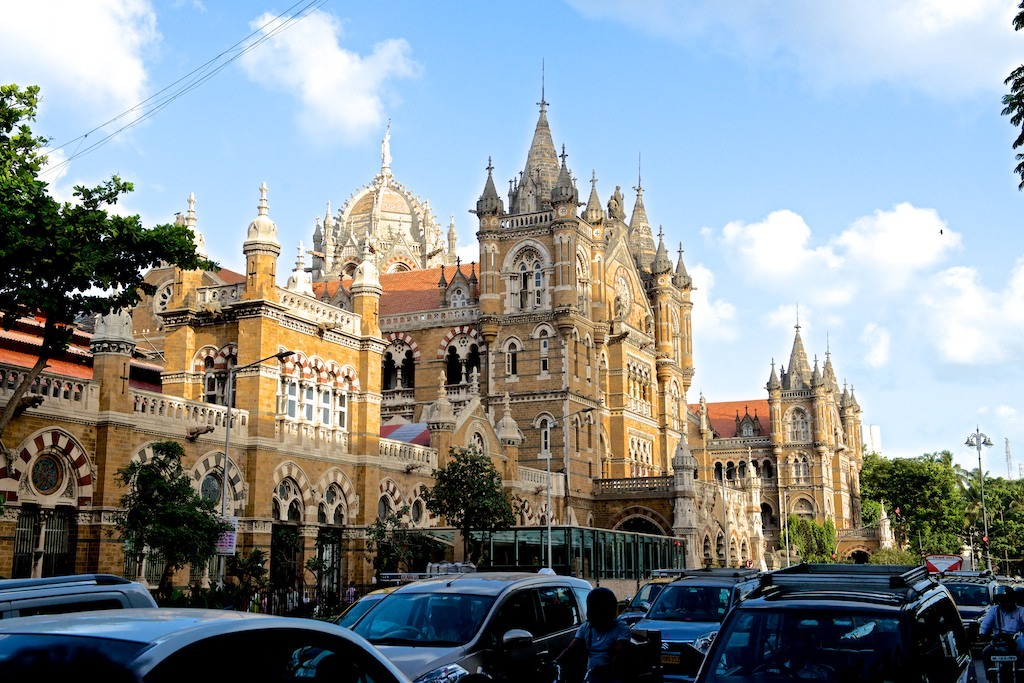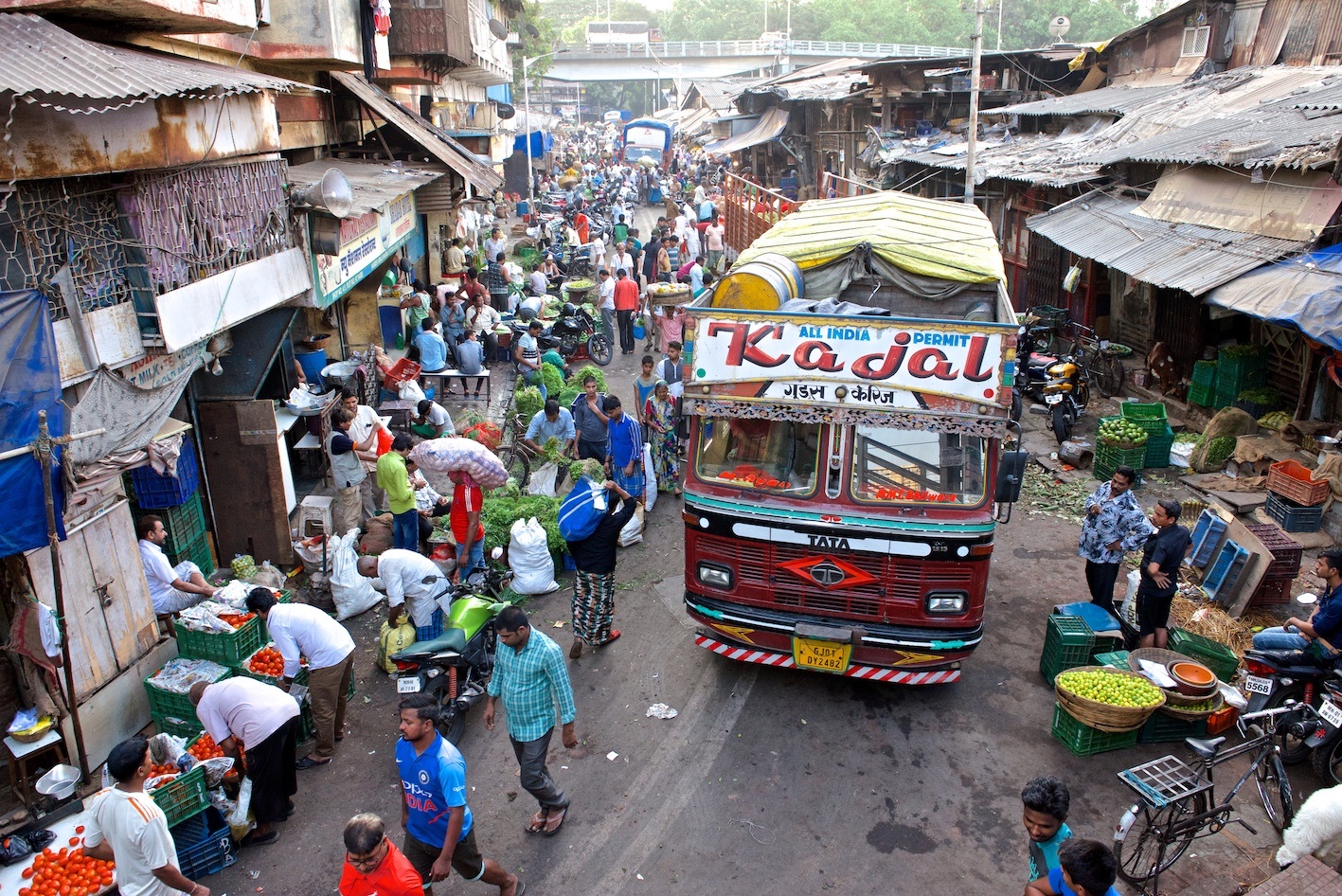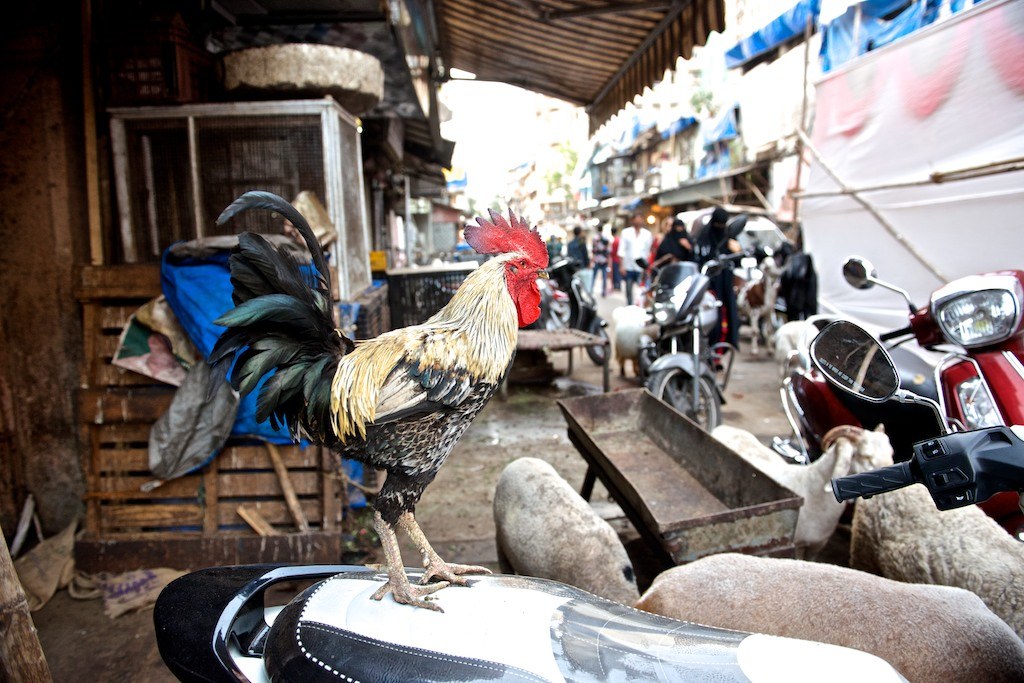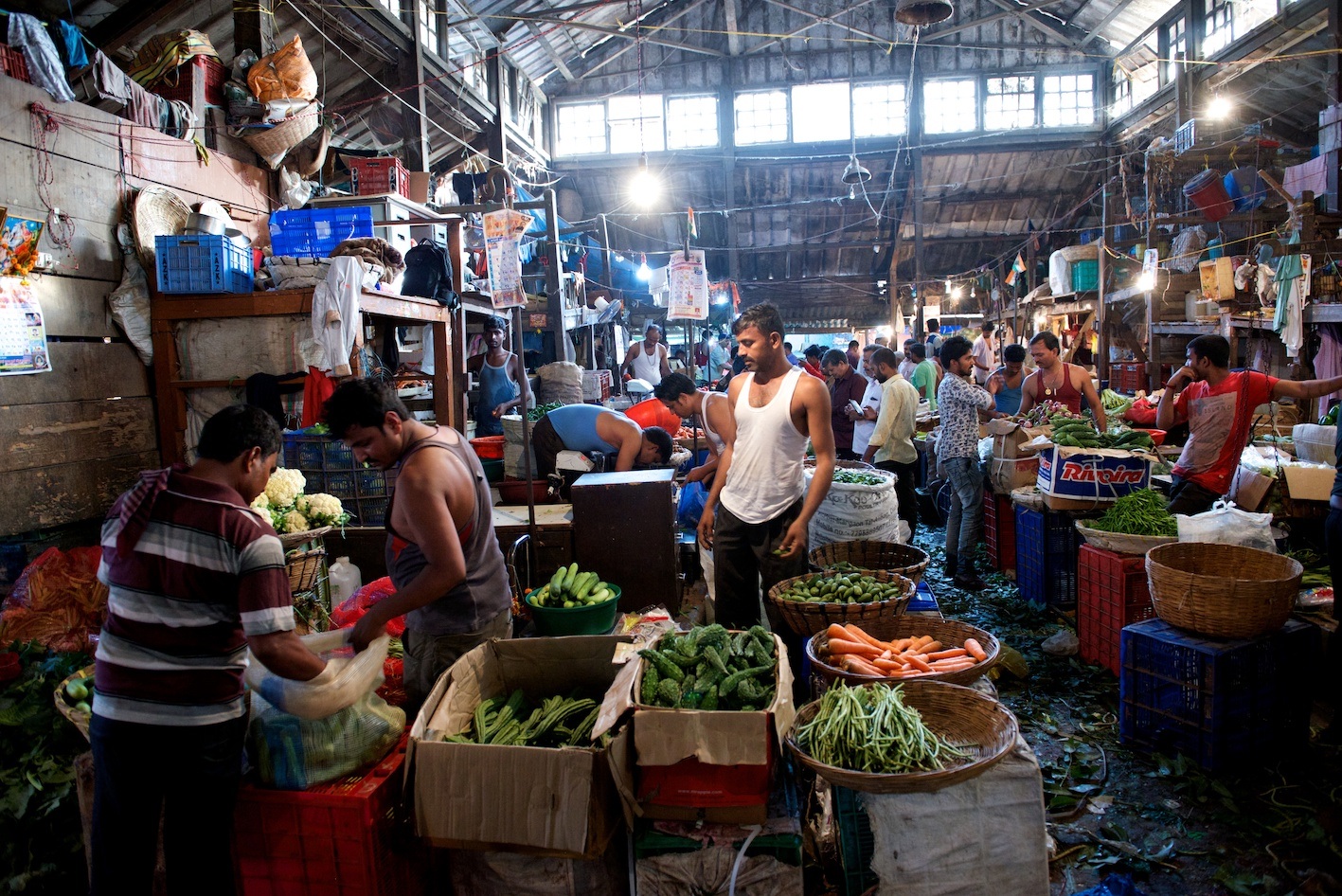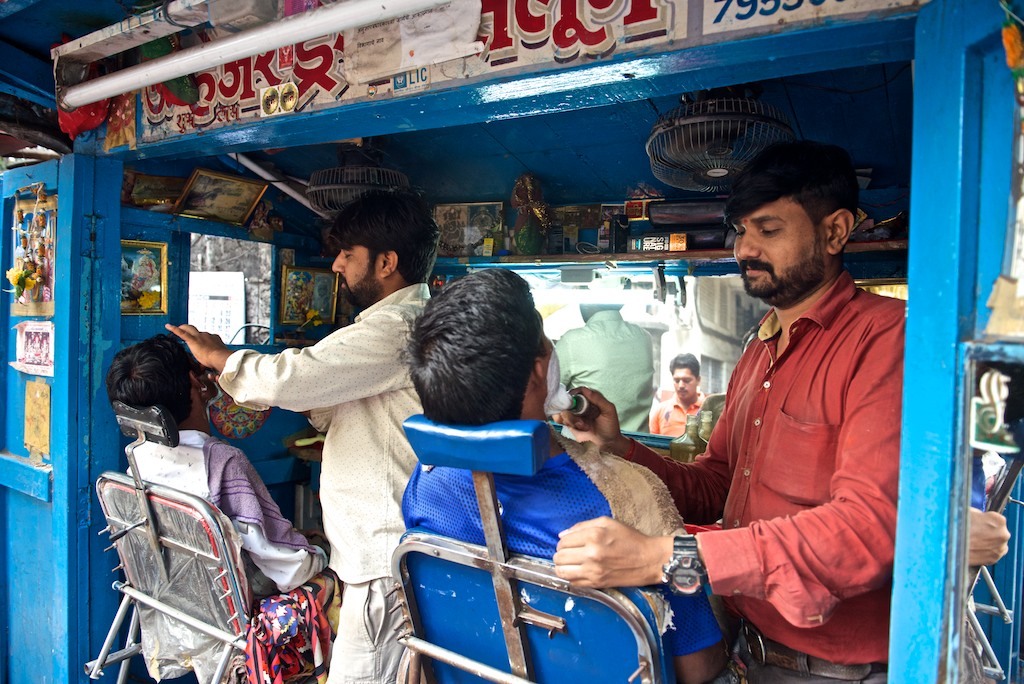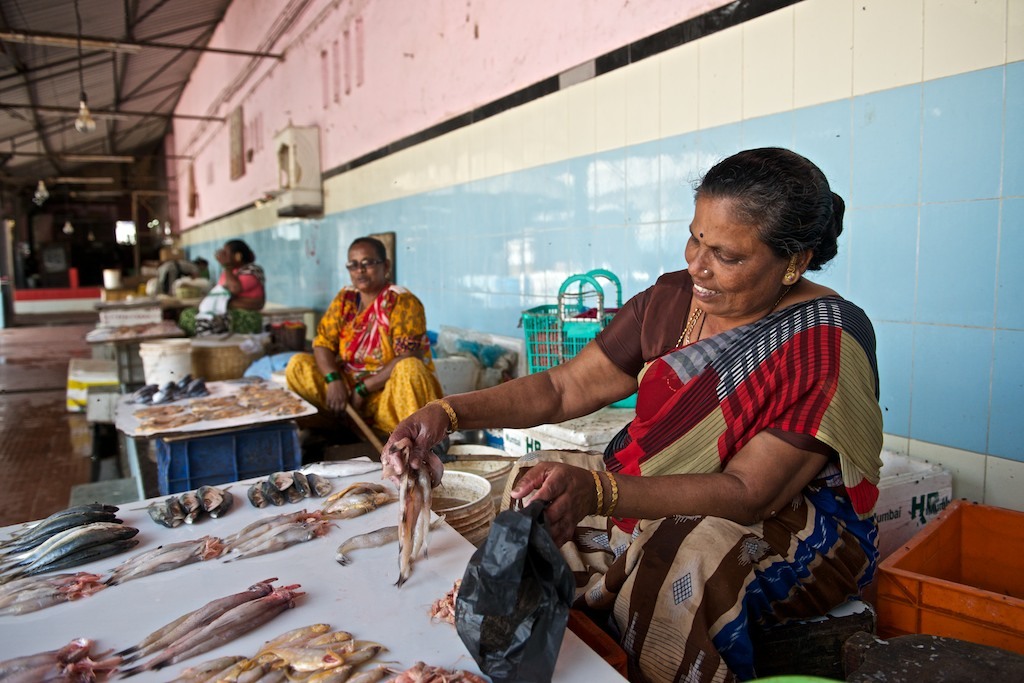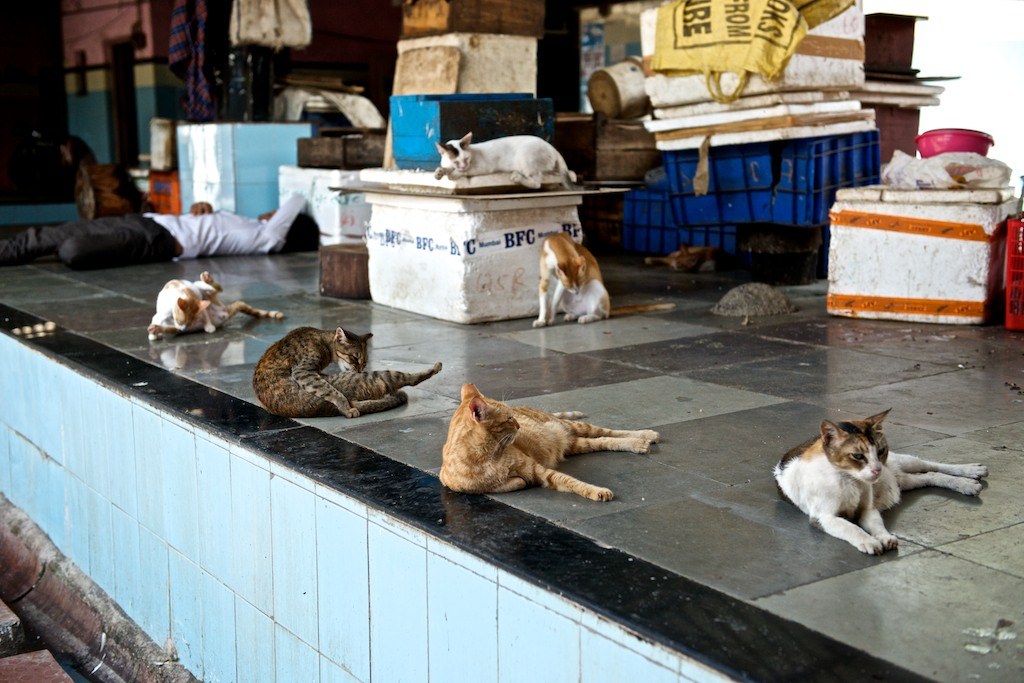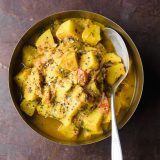Mumbai is chaos, a blizzard of people and animals, buses and buildings—aging colonials, modern high-rises, dusty and crowded low-slung slums—all of it bathed in aromas held thick in humidity: Cilantro, mint, mangos and chilies all linger and collide.
I’d come to India to learn the city’s signature curries, themselves a riot of flavors and ingredients seemingly randomly tossed together. The freeform, carefree stews of the subcontinent. But my lessons began far from the kitchen.
They began as I waded deep into the dawn blur that is Mumbai’s Sasson Dock, a 150-year-old stone peninsula that stretches high out of the water toward the Arabian Sea. Beneath lights hoisted on boat masts, people swarm. Many balance baskets of fish on their heads, others sit cross-legged on plastic tarps covered with chipped ice and mounds of seafood.
The scrum is heavy with brine, impossible to penetrate. So I stop and watch. In time, a previously invisible order emerges.
The auctions—one enormous basket of gleaming, silvery fish at a time—take place on the dock. The action occurs below, where clusters of small white, red and blue wooden fishing boats cram, men hoisting slithering buckets from each. The chaos is coordinated, human chains handing overfilled buckets one to another across dozens of boats.
When the buckets reach the last man, rocking and floating on the water, in a single seamless, elegant motion, he tosses it 15 feet upward over his head, sending it to outstretched hands above that immediately dispatch it to restaurants across the city. It’s all over as soon as the sun crests, phantoming until the following dawn
I’d come to India to learn the city’s signature curries, themselves a riot of flavors and ingredients seemingly randomly tossed together.
The challenge of learning Indian curries begins with broadness. A curry can take almost any form—wet or dry, meaty or vegetarian, mild or wildly spicy—and can include most any ingredient. And there are thousands, likely tens of thousands, of variations across India. That’s a lot of nuance to navigate.
Which is why most of us consider curries just another spiced stew. And when we make them, we tend to just dump everything in the pot and hope for the best. I’d soon learn that’s not quite how it is done. I’d soon learn that as with Sasson Dock, cloaked beneath the chaos is an order that matters. Much.
“Every 500 meters, even house to house, curry changes,” explains Shivani Unakar, an instructor at APB Cook Studio—a friend-of-a-friend’s cooking school—who has offered to ground me in the basics of curry. And her lesson is simple: All that variation doesn’t mean there isn’t an underlying structure. You just need to know where to look for it.
As I sip freshly simmered masala chai—a sweet brew of black tea, milk, ginger, green cardamom, black peppercorns and cinnamon—Unakar prepares aloo matar, a potato and pea curry. It begins with oil heated until almost smoking. Into that, whole cumin seeds are stirred, sizzling for 30 seconds, long enough to perfume the air but not burn.
Next is a mash of finely grated fresh ginger and garlic. The air gets richer. Then red onion and minced green chilies. A few minutes after that, pureed tomatoes and a host of dry ground spices—coriander, cumin, turmeric and the local favorite, Kashmiri chili powder, a mild, boldly red spice used lavishly. It tastes of paprika spiked with cayenne.
Only then does Unakar add potatoes, peas, a generous sprinkle of earthy garam masala spice blend and enough water to create a loose sauce. When the potatoes are tender, she stirs in a bit more garam masala, then we eat, scooping with warm, doughy roti. The potatoes are coated thickly with savory spice that warms without burning, all of it punctuated by sweet pops of green pea and bright tomato.
She follows this with two chicken curries, one seasoned with so much ground coriander it acts as a thickener, the other similar to aloo matar, with chicken replacing the vegetables. In both, her method is rote. Oil is heated. Whole spices are added. Then wet flavorings—the garlic, ginger, onions, fresh chilies. Then ground spices. Then, finally, the main ingredients.
It was methodical. And there was meaning behind it. That’s because Indian cooking is built on a deep understanding that timing—the order in which ingredients are added to the pot—changes not just how each ingredient tastes, but also how they combine to flavor the dish together. And curries, it turns out, mostly are built on the order Unakar showed. An order transparent in—but critical to—the flavor and texture of the finished dish.
The first step is called the tarka, or blooming of whole spices in fat to draw out their flavors, allowing them to evenly season the dish while also preserving their texture. Next, the wet seasonings, which cook just long enough to tame their rawness without diminishing their potency. Then ground dry seasonings, which are more delicate and would toast if added earlier.
In the aloo matar, I also noticed that Unakar added garam masala twice, first with the other ground spices, then again just before serving. Another example of timing. She wants some of it to cook into the other flavors, but also likes the boldness it offers when stirred in just at the end, helping it rise above the more melded flavors of the cooked ingredients.
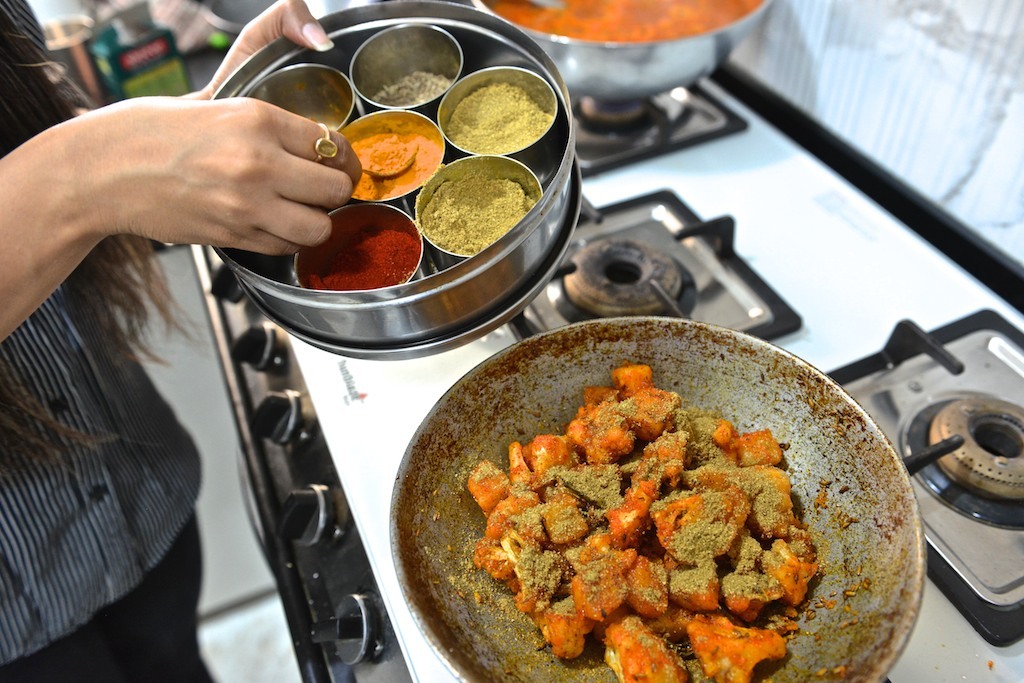
I spend another week eating my way across Mumbai. I taste all manner of curries, but am particularly drawn to those built around potatoes. The starchy chunks act as delicious sponges that soak up the flavors of the sauce, while also thickening it. And regardless of the ingredients or cook, the recipes all follow the same exacting method.
Akanksha Saraf, a former marketing executive who now works from home teaching traditional cooking to young women preparing for marriage, shows me aloo gobi, a potato and cauliflower curry. Her recipe follows the now-familiar pattern, drawing largely on cumin, chilies, turmeric and coriander for flavor.
But Saraf—who wears no shoes while cooking, a sign of respect because the kitchen is close to god—dusts the vegetables with cornstarch, then fries them in oil before adding them to the curry, giving them a lightly crisp exterior and rich flavor. The finished dish reminds me of well-spiced hash browns, the seasonings elevating the heavier flavors and keeping the dish light.
And at Samrat— a sprawling restaurant that specializes in thali, a northern Indian dish composed of a dozen or more items heaped onto a single platter—I discover aloo tamatar sabzi, a saucy potato and tomato curry. Several hundred people pack in for lunch as I graze the flurry of options, but with each bite I go back to the curry.
This one packs more heat than the previous two, thanks largely to a combination of black mustard seeds bloomed in the fat until almost popping, whole green chilies and chili powder. But the effect is addictive, balanced by earthy turmeric and a bit of sugar, as well as cooling yogurt and cilantro.
Back at Milk Street, we couldn’t stay true to every ingredient—many in India simply aren’t common to the typical American supermarket. The substitutions were straightforward—cayenne and paprika for Kashmiri chili, for example. But adhering to the method we’d seen time and again—first blooming whole spices, then adding wet seasonings, finishing with dry ground—was simple.
A good reminder that a freewheeling appearance can sometimes obscure a hidden order that ensures delicious results.
More From Mumbai
